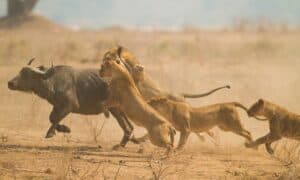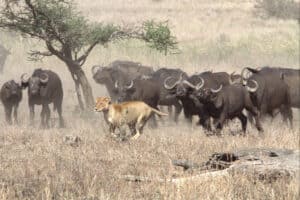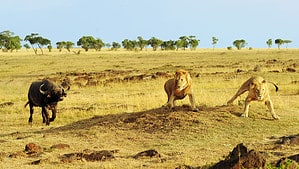Nature is full of wild interactions, especially between predators and prey. Latest Sightings is a popular wildlife YouTube channel that is no stranger to this. In a video we have below, lions go head-to-head with a herd of buffalo.
Check Out the Full Video!
In this video, you’ll see a lion pride attacking and bringing down buffalo. Watch this entire video until the end, it may surprise you!
Following a conflict between the two lion prides, a buffalo that was about to become the supper for several lions miraculously survived. Mike Kirkman, an accredited guide of South Africa’s Mala Mala Private Game Reserve recorded the video.
He came upon two competing lion prides watching a herd of buffalos while on a safari tour. One pride’s lioness jumped on a wandering buffalo that was in trouble. Despite popular belief, it is indeed the lioness that does the majority of the hunting.
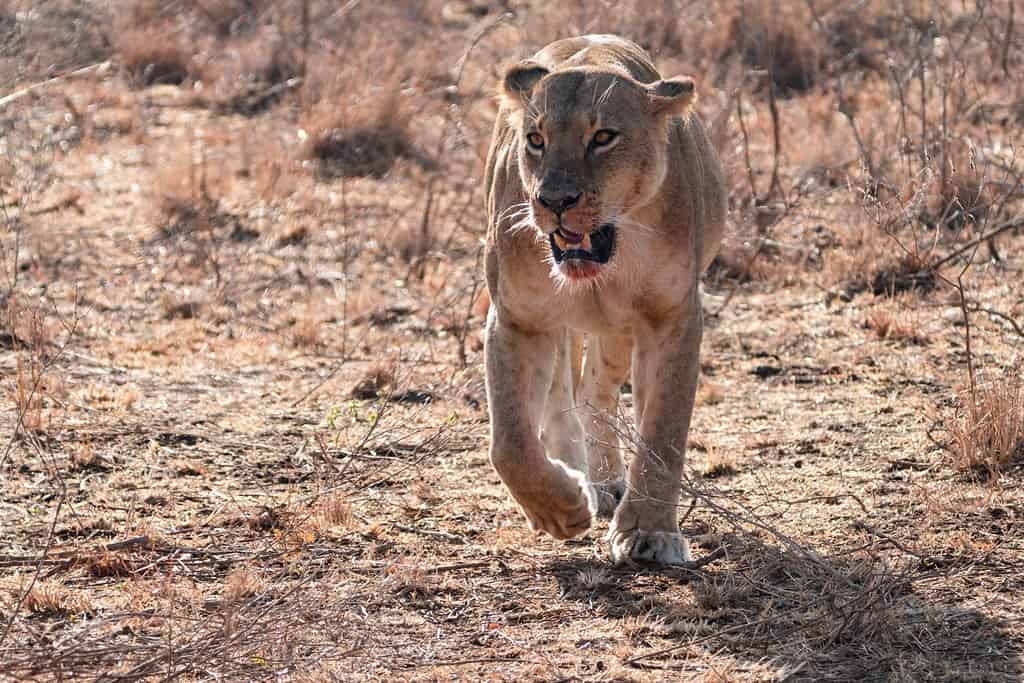
Female lions often lead the hunt for the entire pride.
©melissamn/Shutterstock.com
The lioness from the other pride dashes into sight as the buffalo’s calls for aid start to fade. Funny enough, the buffalo got to its feet and hobbled toward safety as the two big cats continued to fight for a meal that was no longer there.
A top comment on the upload reads, “What an amazing sighting! Incredible that the buffalo was able to get up and trot away after all that, what a narrow escape!” We couldn’t agree more!
How Do Buffalo Adapt to Defend Themselves?
Buffalo often don’t flee when they see a predator; instead, they form a protective circle about the most defenseless individuals in the herd, facing out so they can employ their horns to perhaps scare off or harm any intruders.
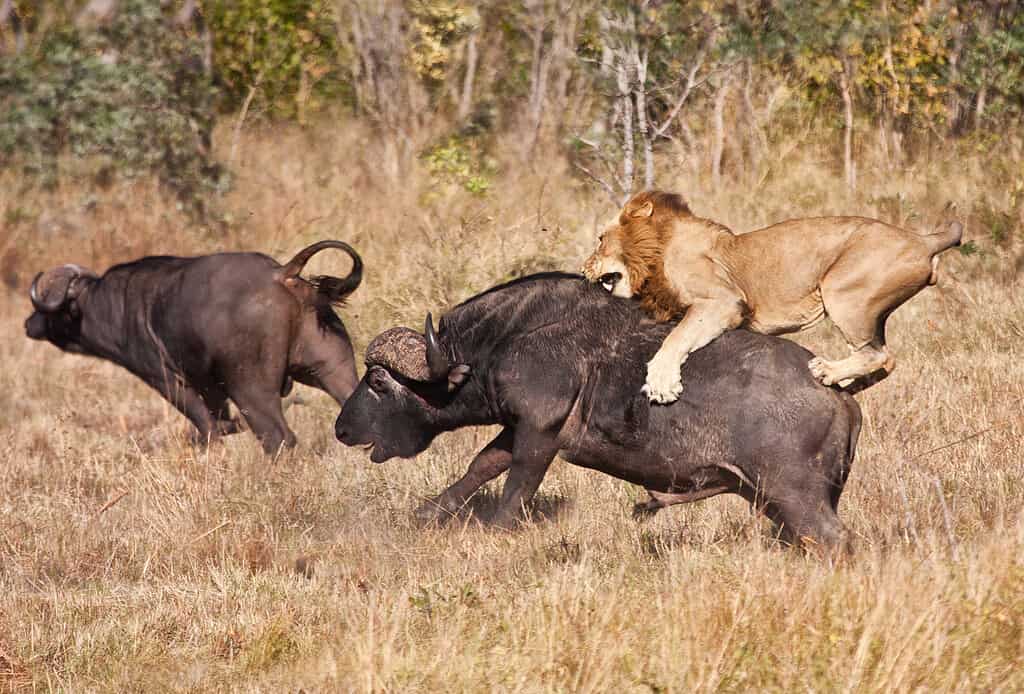
Lions will often attack larger prey from behind.
©iStock.com/AOosthuizen
They also have large, strong horns that are helpful. These are pointed and serve as a protection against predators for both males and females. Horns are effective for cutting at an attacker’s flank and stomach.
As infection will swiftly take hold of the open wounds, these kinds of wounds frequently result in death for the attacker. It’s a slow burn, but boy, does it pay off for the buffalo. These large beasts are also known to be quite aggressive towards predators. This keeps them safer than a timid personality would.
More Animals That Live With Lions and Buffalo
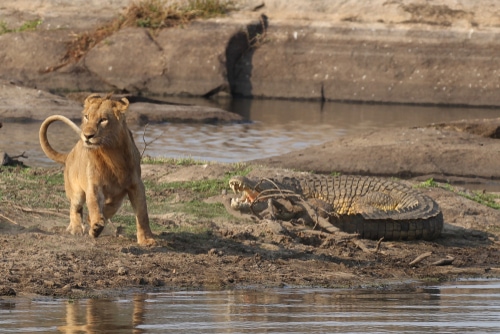
The primary cause of fights among adult lions and crocodiles is each predator’s desire to take the other’s prey.
©Beate Wolter/Shutterstock.com
The main predators in the area that can take down both buffalos and lions are crocodiles. Although it is improbable that a crocodile would regularly hunt prey as big as an adult buffalo, crocodiles are ancient predators.
They will engage in any fight in the hopes of snatching a piece of meat. When a lion enters the water, a crocodile might attack it, although lions have been known to hunt and consume juvenile crocodiles.
The primary cause of fights among adult lions and crocodiles is each predator’s desire to take the other’s prey. Although these battles are uncommon, lions tend to be the aggressors.
The photo featured at the top of this post is © nwdph/Shutterstock.com
Thank you for reading! Have some feedback for us? Contact the AZ Animals editorial team.



